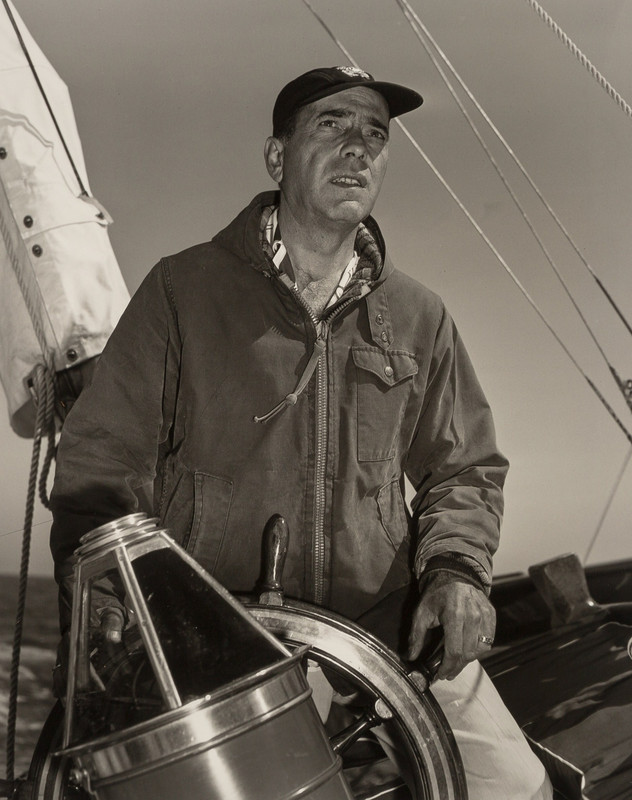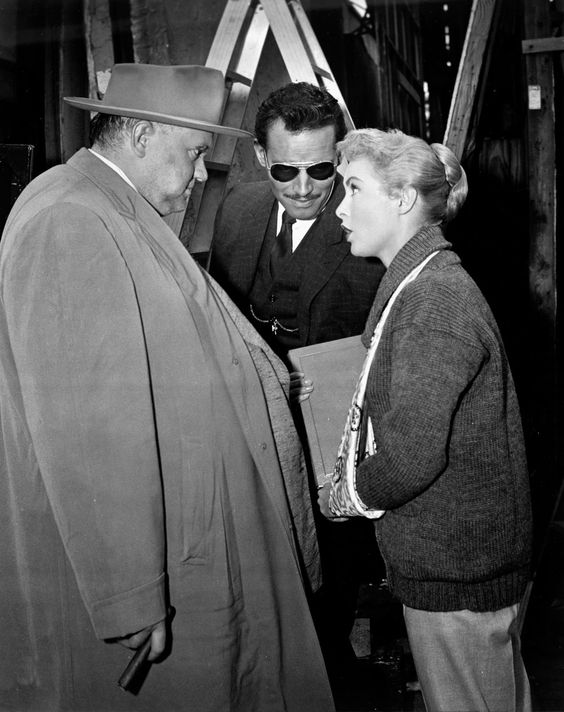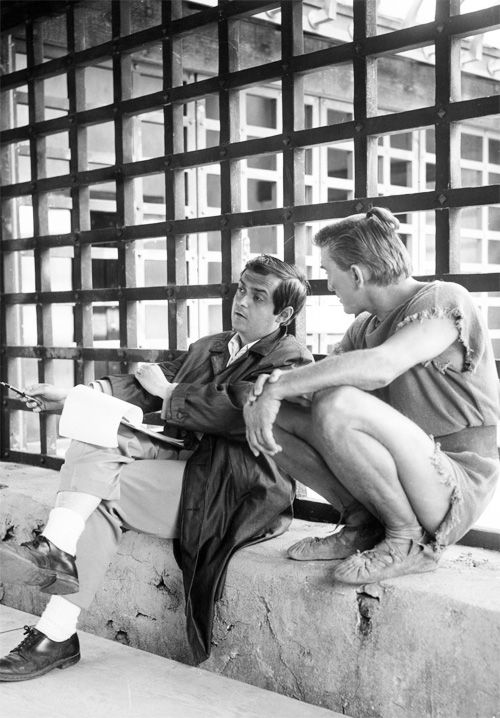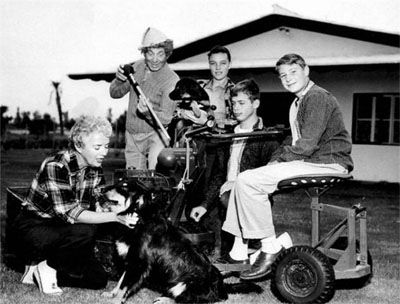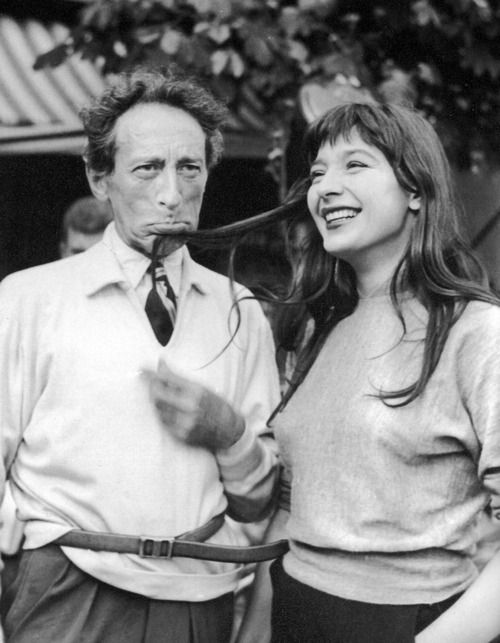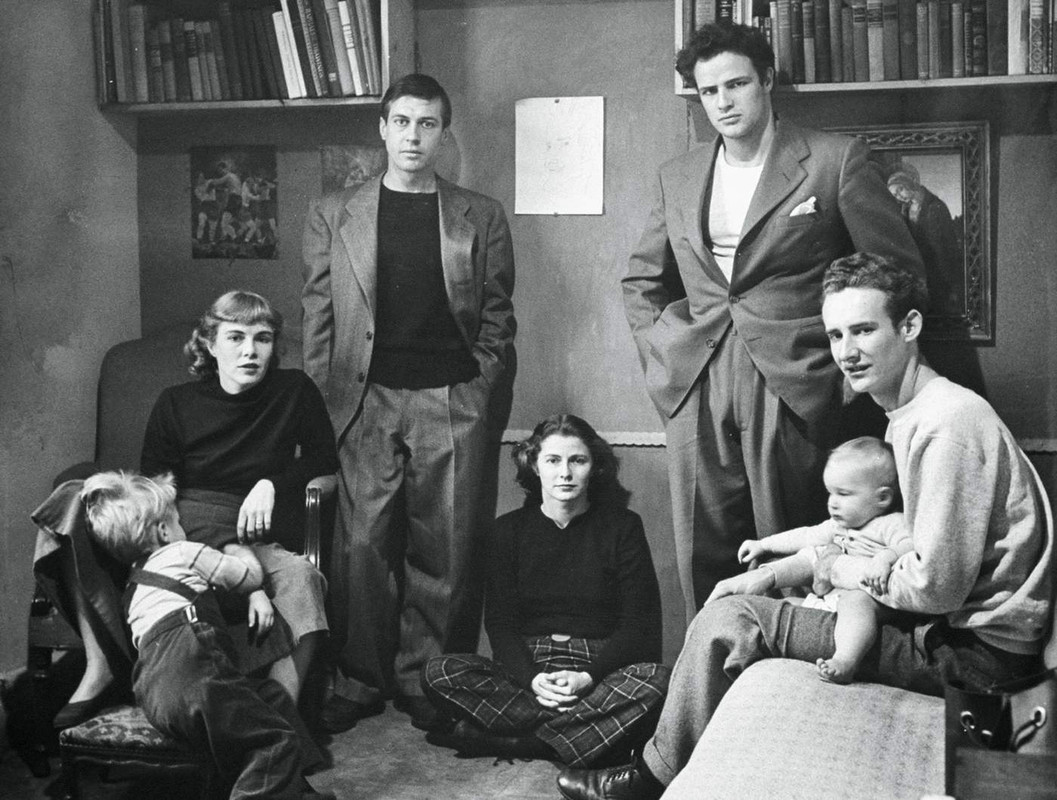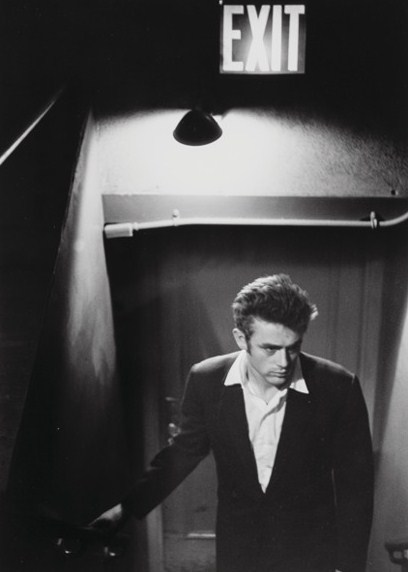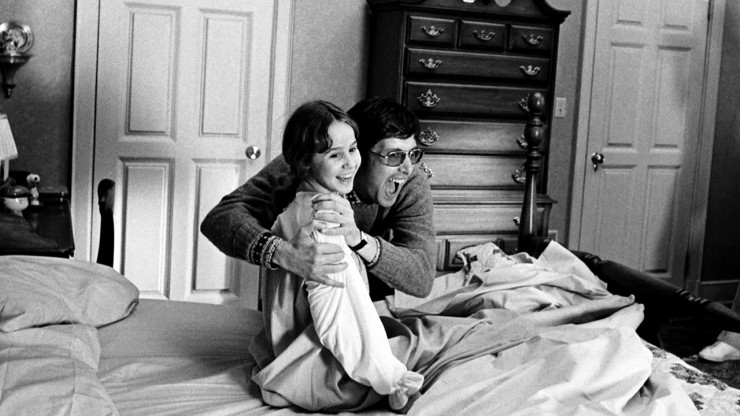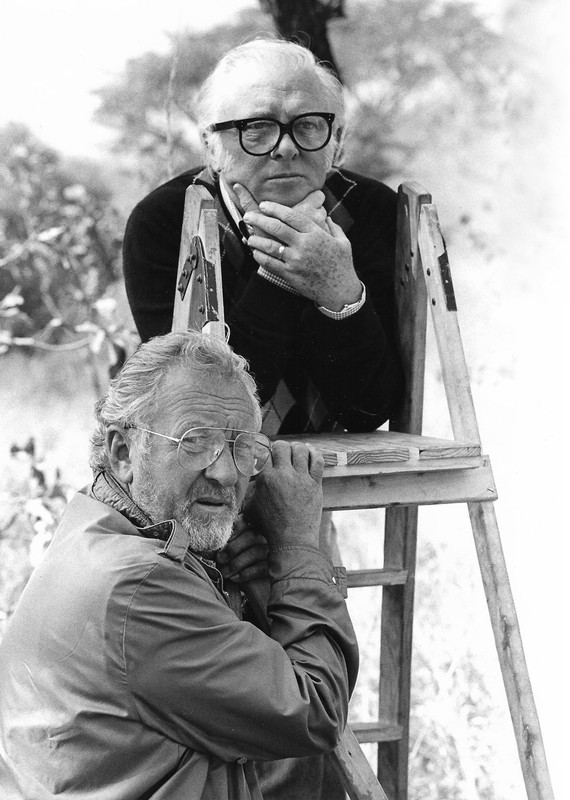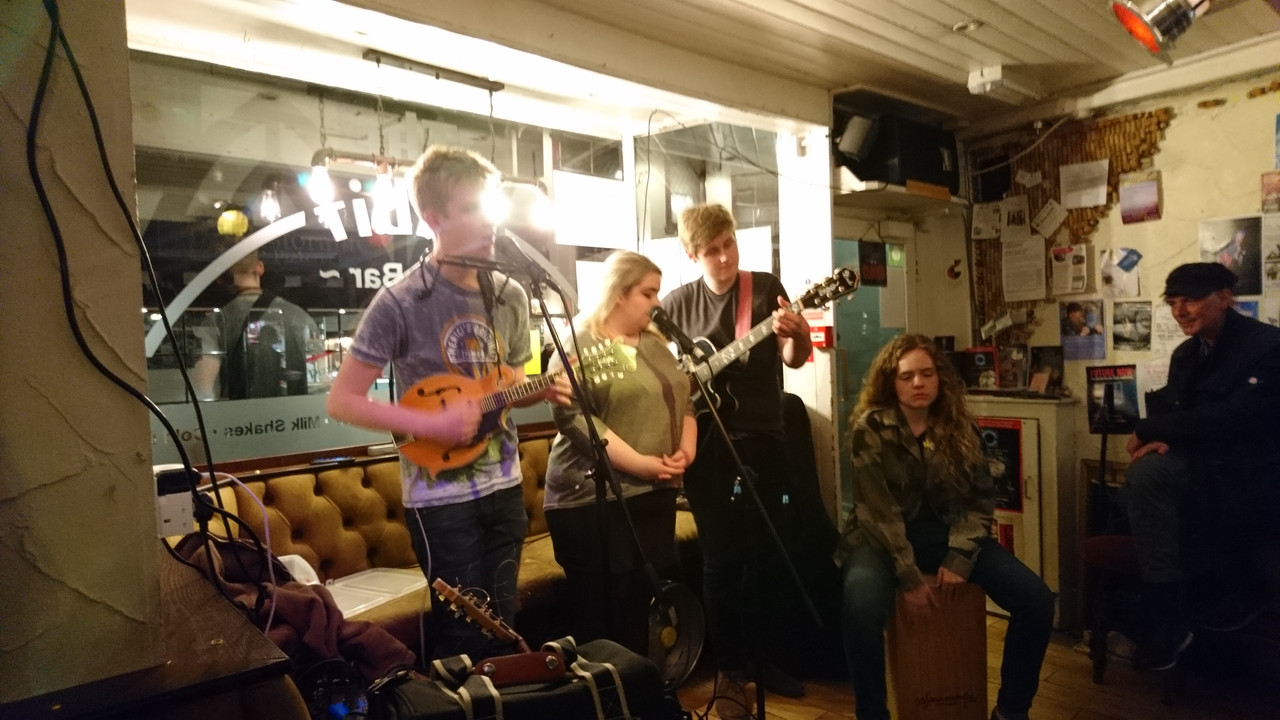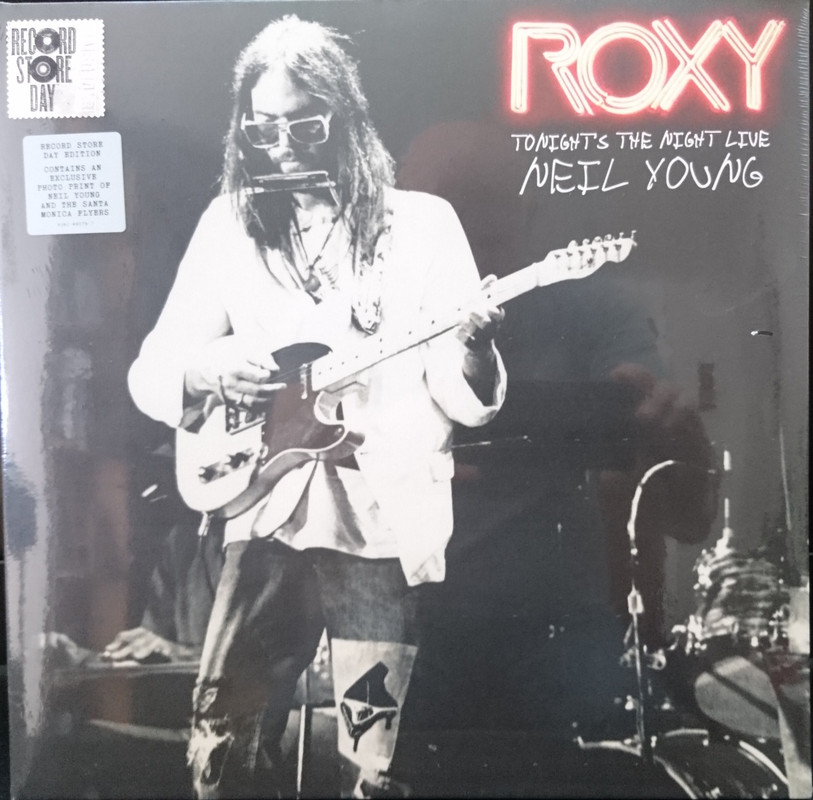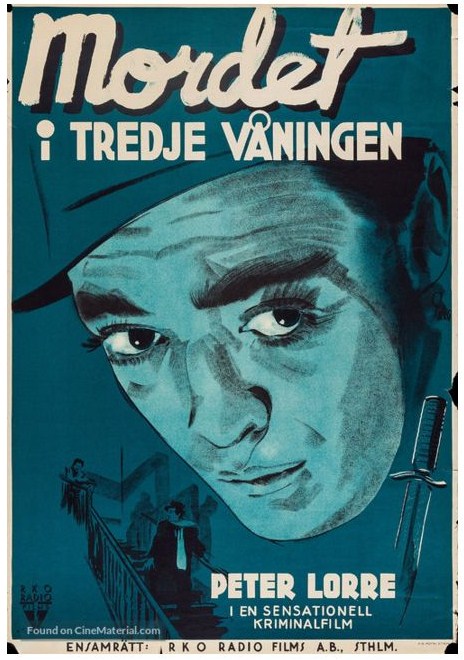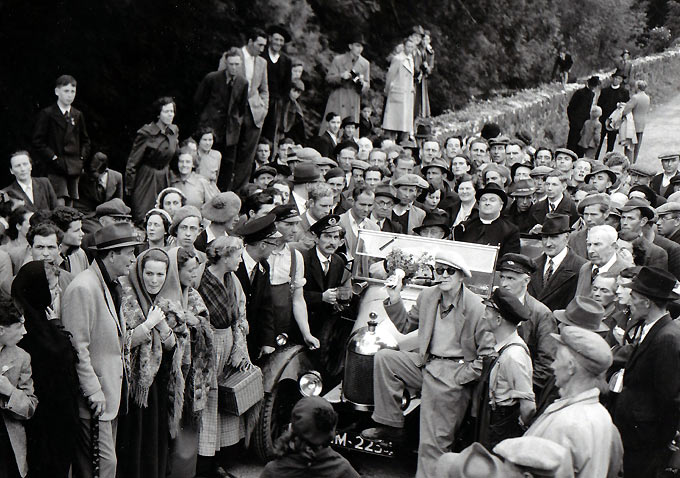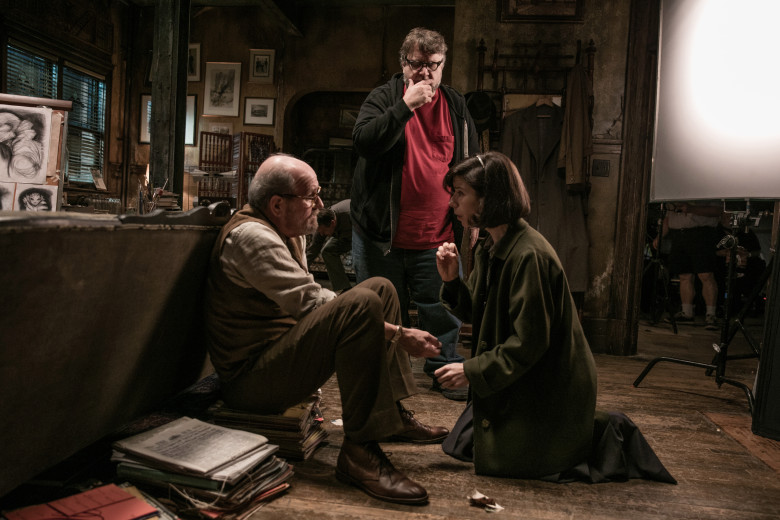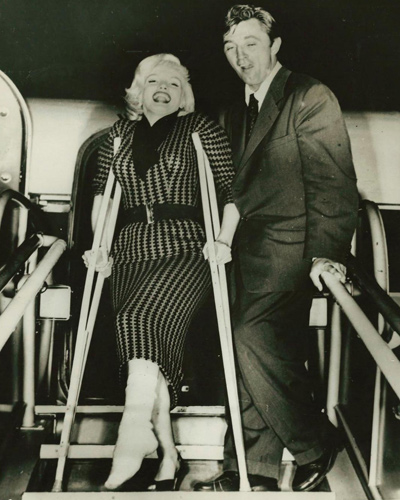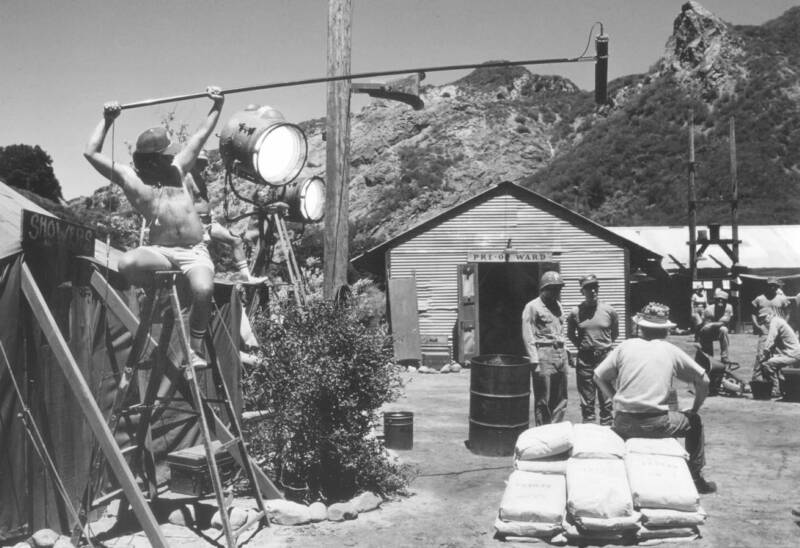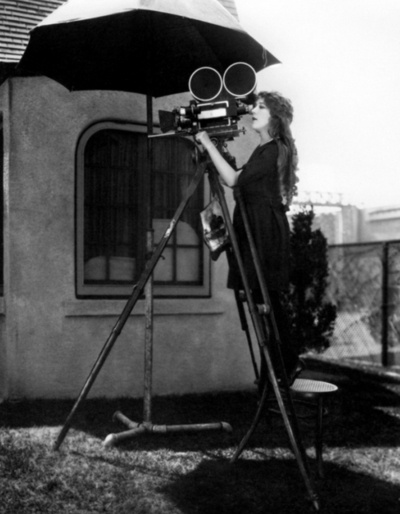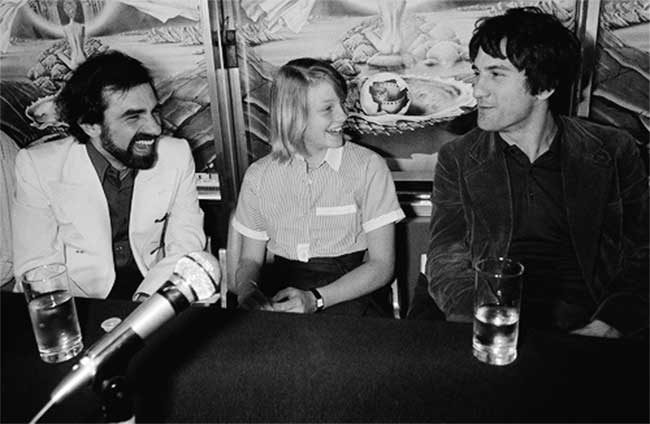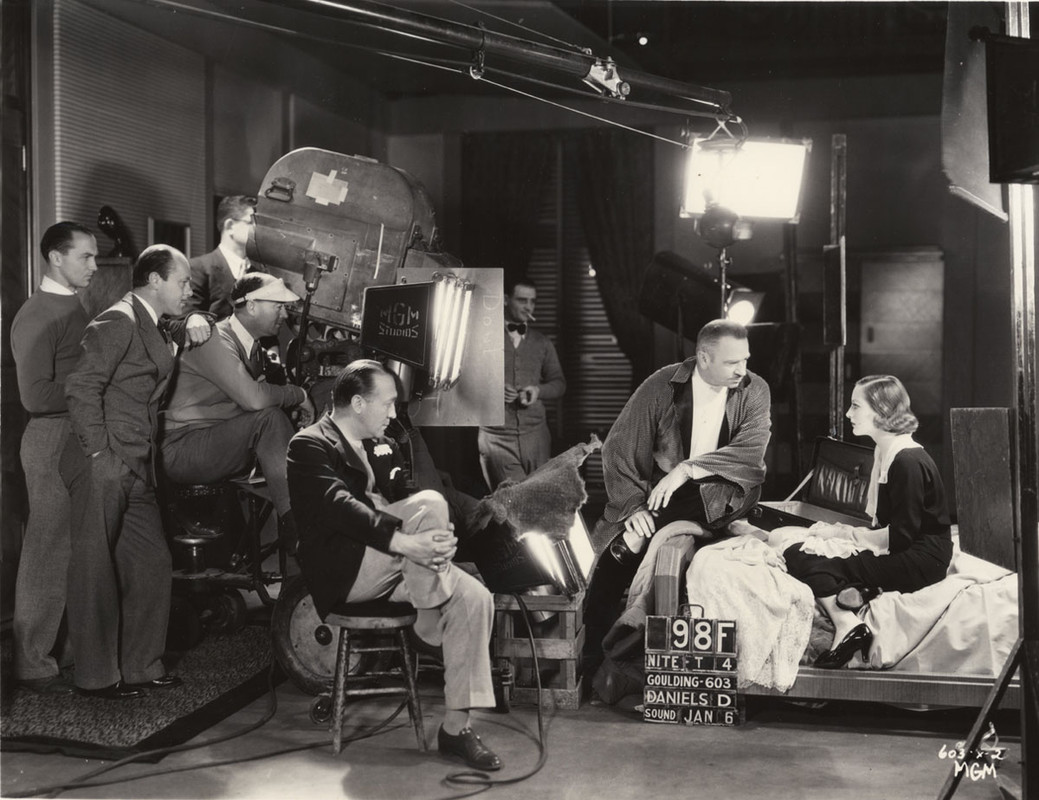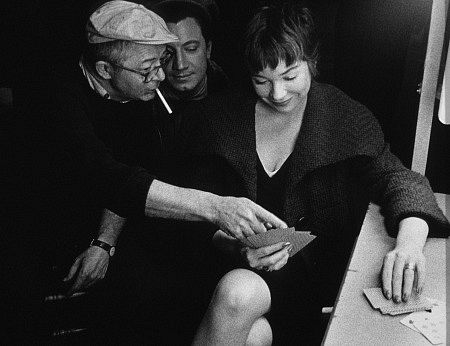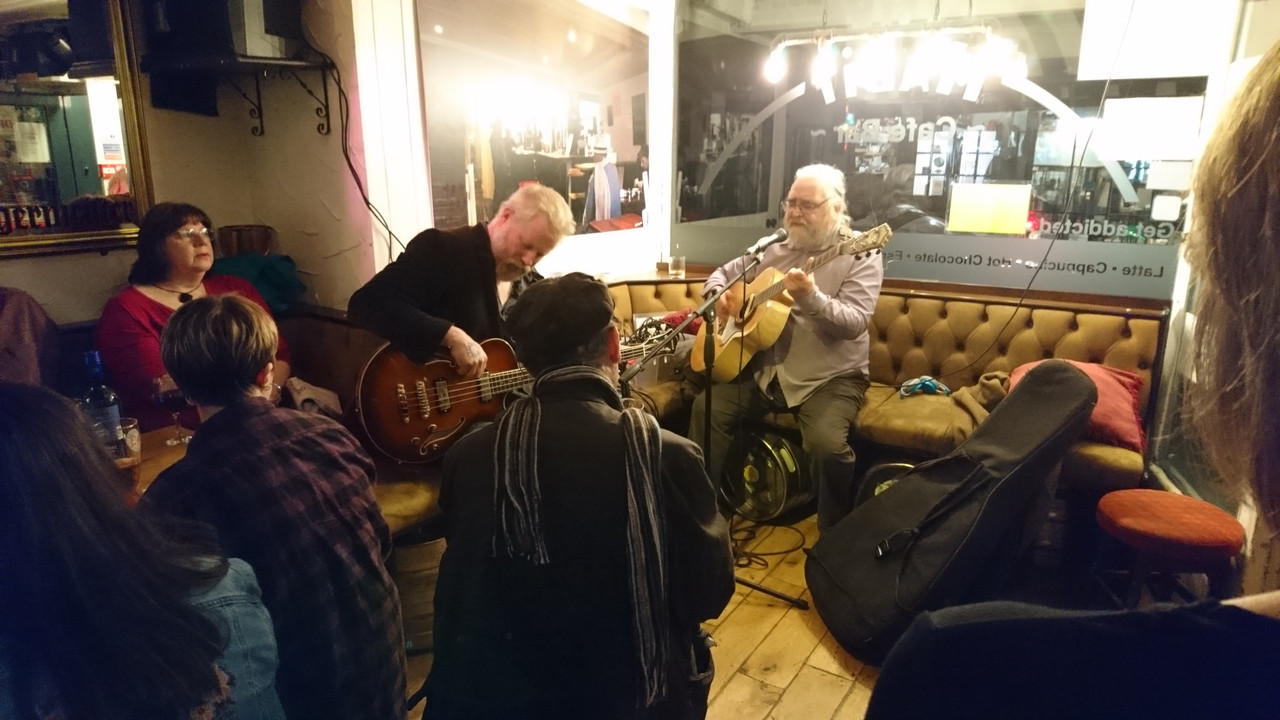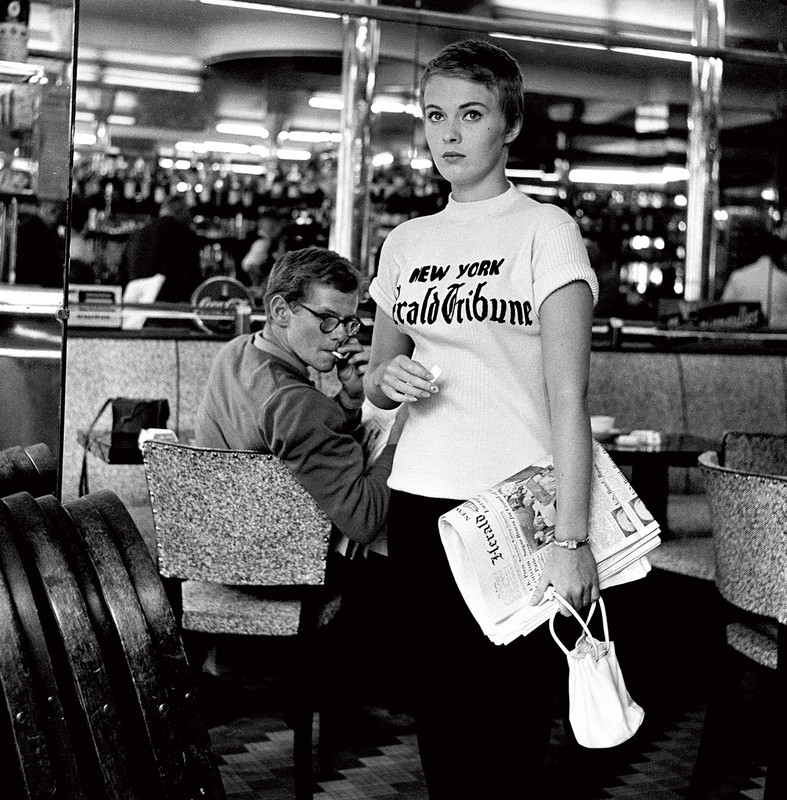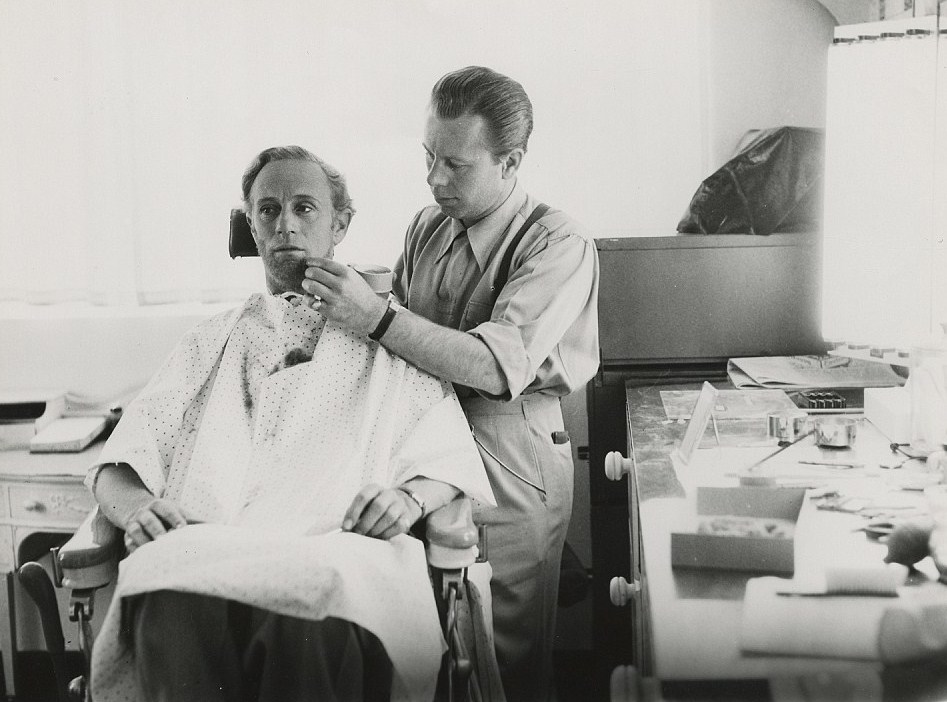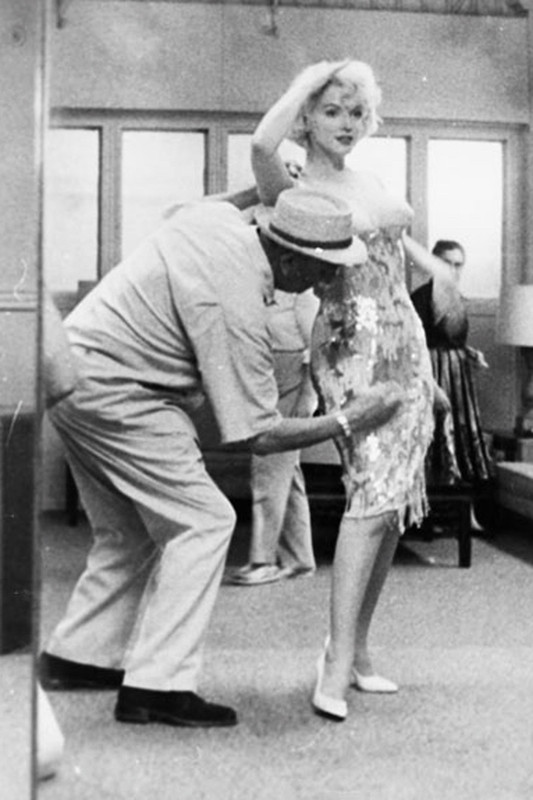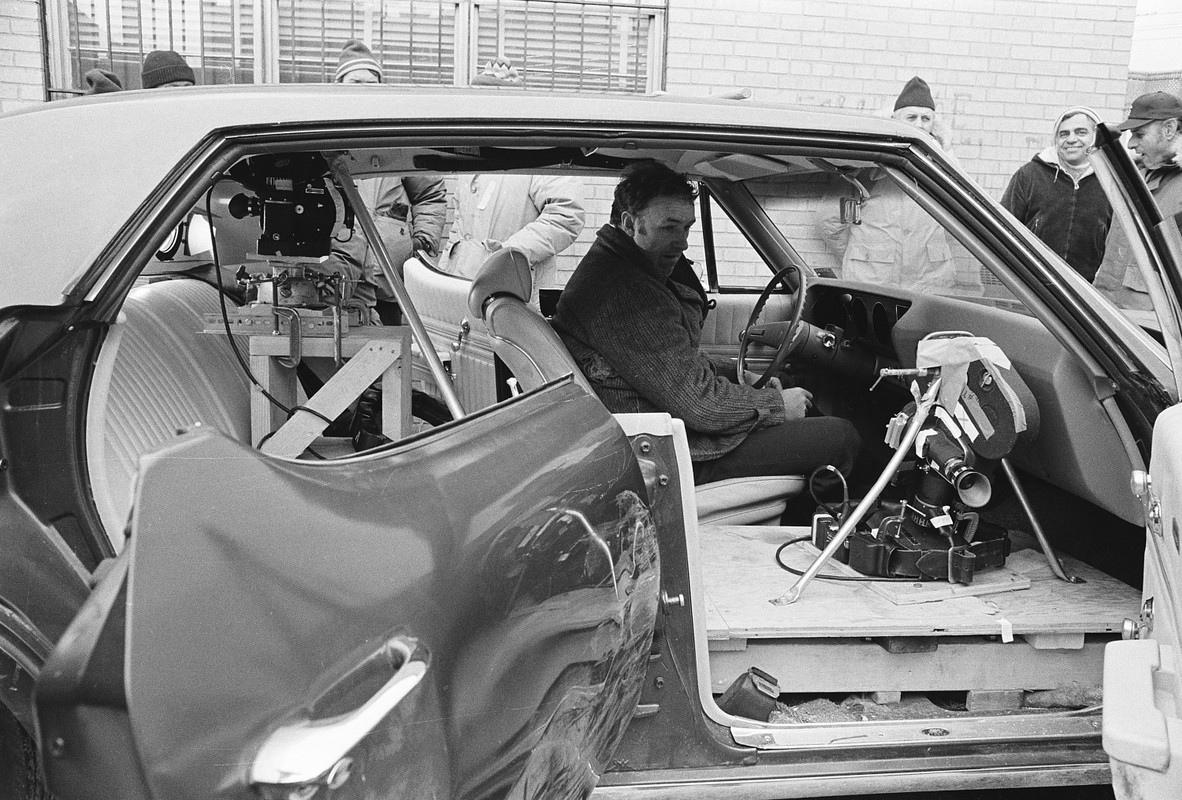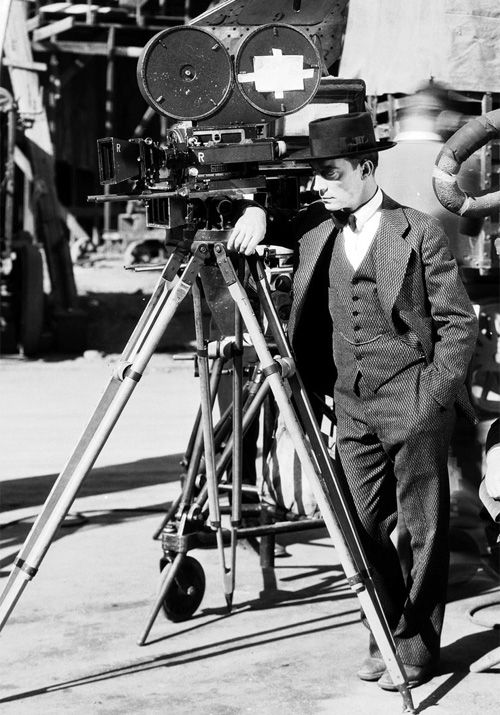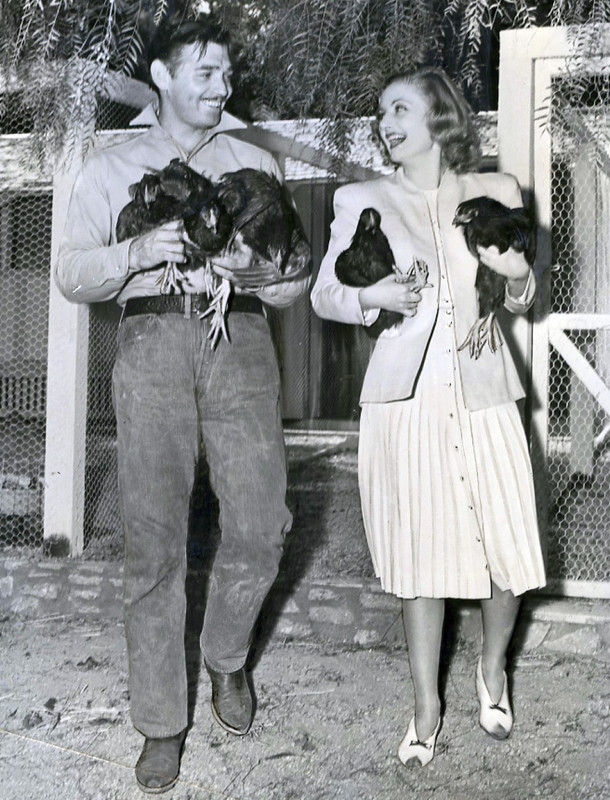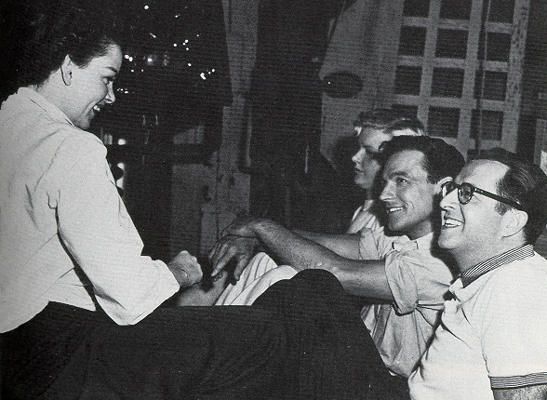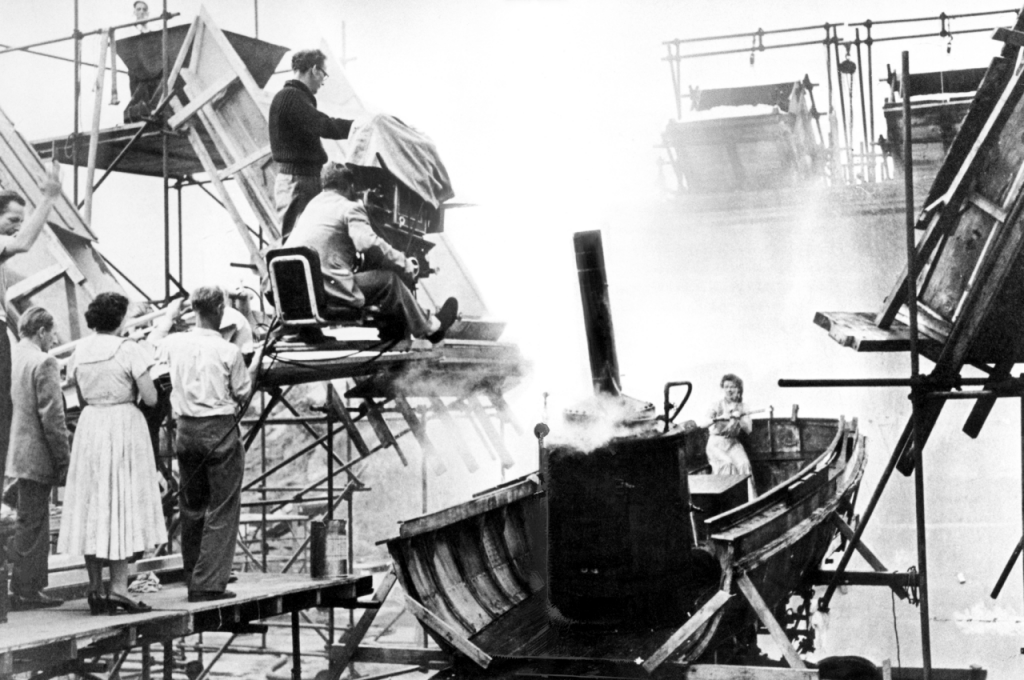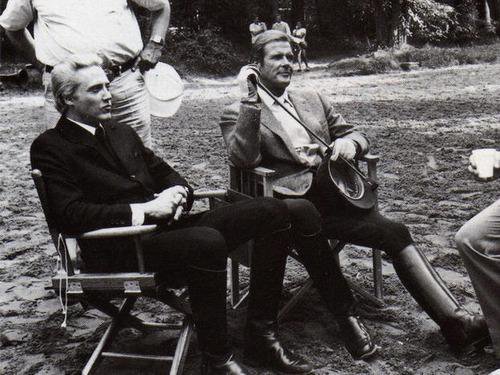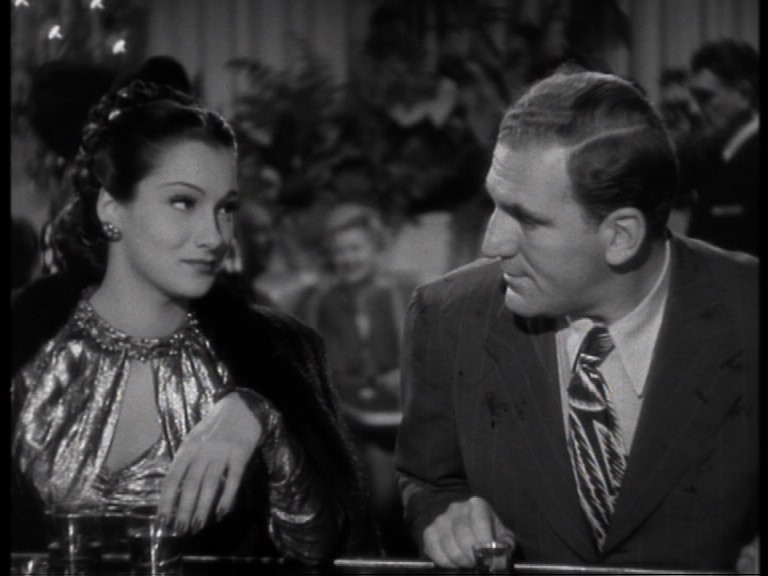
Monday 30 April 2018
Sunday 29 April 2018
Saturday 28 April 2018
Beyond the Notes: Blue Note Records documentary
Acclaimed director Sophie Huber, mastermind behind ‘Blue Note Records: Beyond The Notes’, discusses jazz, creativity, and a mind-blowing session with Wayne Shorter and Herbie Hancock.
Charles Waring
udiscovermusic.com
23 April 2018
Beyond The Notes is a 90-minute film written and directed by Sophie Huber chronicling the story of Blue Note Records, a label that boasts a rich and storied history, and which is also arguably jazz’s most iconic and influential record company.
Switzerland-born Huber, who reaped much acclaim in 2012 for Partly Fiction, her vivid and informal portrait of actor/musician Harry Dean Stanton, traces the label from its birth in 1939 – when German-Jewish immigrants and jazz enthusiasts, Alfred Lion and Francis Wolff, started the company – up until the present day. The film’s narrative is told via a combination of music, imagery (Blue Note had a strong visual identity, thanks to Francis Wolff’s photographs and Reid Miles’ cover designs) and talking-head contributions from musicians and people associated with the label. These include jazz grandees Herbie Hancock and Wayne Shorter, who joined the label in the early 60s; 90-year-old Lou Donaldson, whose affiliation with the company goes back to the late 40s; the late Rudy Van Gelder, the audio engineer who helped to establish the Blue Note sound; the label’s current president, producer Don Was; and some of the company’s current roster, including Robert Glasper, Norah Jones, Ambrose Akinmusire and Marcus Strickland.
“It takes a lot of work and a long time to make a documentary – and a great editor,” laughs Sophie Huber, speaking to uDiscover Music ahead of the film’s premiere, which took place on 23 April, when it was screened in New York as part of the prestigious Tribeca Film Festival.
“The editing in documentary filmmaking is really the writing process,” she continues, adding that Beyond The Notes took three and a half years to make. The process was exceedingly time-consuming and, to an outsider, perhaps, even painstakingly laborious. Says Huber: “I sat together with [editor] Russell Greene for a year in a little dark room without any windows and tried to figure out how to piece it all together. It was like a giant puzzle and because we were still shooting during the editing process, everything would also change.”
Despite the inherent complexity of making a documentary, Sophie Huber says the finished film stayed true to her original conception. “It’s still pretty close to what I had imagined at the very start,” she reveals, “which is that I wanted to do something that is told from today and through the musicians, rather than historians and journalists outside of the label. Through this we tried to create an intimate look behind the scenes of Blue Note and also focus on the creative process and what it means to create music on the spot.”
She’s referring, of course, to the very ethos of jazz, which is defined by spontaneous improvisation and is at the heart and soul of Blue Note’s style and sound. To illustrate Huber’s fascination with music that is created “in the moment”, from scratch, out of nothing, Beyond The Notes begins with a fly-on-the-wall look at a contemporary Blue Note recording session in Capitol Studios featuring the label’s supergroup, Blue Note All-Stars, making their album, Our Point Of View, with Don Was producing.
What adds further interest to the session is the arrival of Blue Note legends Wayne Shorter and Herbie Hancock, so that the film captures a moment when the young lions meet the old masters, and when Blue Note’s past comes face-to-face with its present. “It was really quite magical,” exclaims Huber. “Especially that day when Wayne and Herbie joined the session. There was an electric atmosphere in the room because everybody, especially the young guys, were so excited.”
The two veterans joined the young disciples for a version of Shorter’s classic tune ‘Masqualero’. They did just two takes but, according to Sophie Huber, both were completely different from each other. “Just to witness what happened in that room and how it was being created in the moment was really amazing,” she says.
The recording session was where the director interviewed Hancock and Shorter, who come across like a comedic double act touched by the power of Zen mysticism. “I had planned to interview them separately but there wasn’t enough time so they did it together,” explains Huber. “It was one of the most amazing moments, really, because they are so incredibly present and curious and generous and funny. It was really extraordinary. It was more of a conversation going from one topic to the next. I was really amazed by them.”
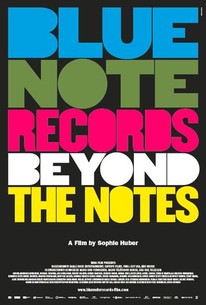
Originally from the Swiss city of Bern, Sophie Huber brings a fresh perspective to her telling of Blue Note’s story. Many jazz documentaries make the mistake of being too academic, confirming some people’s erroneous perceptions that jazz is, by and large, elitist and esoteric. Thankfully, though, Sophie Huber avoids that trap, and has produced a work that people without any academic knowledge of jazz can understand and appreciate. She denies, though, that her film is an attempt to demystify the music: “I wouldn’t say that because I like the mystery of it, but definitely it was my goal to reach a younger audience and make people, especially young people, aware of the incredible value of this music.”
Though the film is still awaiting a public release, the feedback from test screenings has greatly encouraged the director. “What really surprised me was that people who didn’t necessarily like jazz, or know about jazz, responded to it really well,” she says.
What also may attract a younger demographic to Beyond The Notes is the film’s focus on how hip-hop and its practice of sampling old records for new beats has helped to keep Blue Note alive and relevant. Huber says her on-screen interviews with producer Terrace Martin and Ali Shaheed Muhammed, from the hip-hop group A Tribe Called Quest, proved revelatory because they connected the rise of hip-hop with the US government stopping funding for after-school music tuition. “That surprised me,” says Huber. “There was a lack of instruments in black neighbourhoods because they cut the school programs, and that forced them to use records as an instrument.”
Though not a musician, Huber’s interest in Blue Note goes back to her childhood. “My father had a couple of Blue Note records,” she says. “I remember one of them being Art Blakey’s At The Cafe Bohemia. I used to listen to it and go to the jazz festival in Bern.” What drew her to making a documentary about the label wasn’t just the superlative music and the company’s arresting visual aesthetics, but the fascinating story of its founders, Alfred Lion and Francis Wolff, who fled their native Germany for America to escape Hitler’s persecution of Jewish people. “When I started to research Blue Note, I was really moved by the German-Jewish immigrants who started the label, and how they came together with African-Americans and found freedom in the music together and built this incredible legacy that still talks to young people today. I just wanted to follow that thread in the film and show how the music is a portal for people to find a hopeful, free way to express themselves.”
Lion and Wolff weren’t stereotypical record company men – in fact, they were the complete opposite, putting art above commerce and profit margins. Says Huber: “What made Blue Note different in a way was, first of all, Alfred Lion and Francis Wolff were crazy jazz fans who had no idea of how the music business worked. So basically they just wanted to make records that they wanted to hear themselves. They had such a respect and love for the musicians that they just let them do whatever they wanted to do. I think that approach led to releases that were really revolutionary.”
Blue Note’s two pioneering bosses also weren’t averse to taking risks – both financial and artistic. They signed and recorded Thelonious Monk in 1947, when no one else would touch him because of the seemingly challenging, avant-garde nature of his sound. “At that time, nobody else had recorded Monk,” explains Huber. “The label nearly collapsed when they put all this money into him and his records wouldn’t sell. But of course, today, many years later, he’s still so important. We might never have heard of Monk if not for them.”
Indeed, Lion and Wolff gave a valuable platform of self-expression to African-American jazz musicians during a time when social freedoms were denied them by an inherently racist society. Veteran saxophonist Lou Donaldson says in the film that all white-owned record labels were “all a bunch of scoundrels”, though adds: “but not Alfred”, a comment that also reveals why Lion and Wolff earned the trust, as well as respect and affection, of black musicians.
Noted producer Don Was (whose production credits rage from The B-52s to Bob Dylan and The Rolling Stones) became president of the label in 2012. Sophie Huber believes that the label is in safe hands with Was, a rabid jazz fan and a devoted Blue Note disciple from way back, at the helm: “I think Don really understands and follows the legacy of what was important to Alfred Lion and Francis Wolff,” she says. “All the musicians I talked to said that they really feel like they can do what they want and that he supports them. And Don being a musician himself helps their trust as well, so it was just a really nice vibe on the sessions that I saw. He really cares deeply about the music.”
Huber is hoping that the film will eventually be released commercially on DVD, and there might even be a soundtrack album as well. “I’d love to do that, and we’re talking about it,” discloses the director, who also chose and sequenced all the music in a film that is nothing less than an absolute artistic triumph. And, like all good films about music, Beyond The Notes is the kind of inspiring documentary that makes the viewer immediately want to go and immerse themselves in the music and connect with it more deeply.
As for its director, Sophie Huber, you may think that she’s sick of listening to jazz after living and breathing nothing but Blue Note music during the past three and a half years. But you’d be wrong. The experience of making the film, she says, has changed her life and she’s certainly not grown immune to the charms of the Blue Note sound. “I still want to hear it,” she laughs. “A lot of these records I’ve heard now hundreds of times but the music’s still incredibly powerful to me… and that amazes me.”
Directed by Sophie Huber, Blue Note Records: Beyond The Notes is premiered at the 2018 Tribeca Film Festival. Find out more about the film here.
Beyond The Notes is a 90-minute film written and directed by Sophie Huber chronicling the story of Blue Note Records, a label that boasts a rich and storied history, and which is also arguably jazz’s most iconic and influential record company.
Switzerland-born Huber, who reaped much acclaim in 2012 for Partly Fiction, her vivid and informal portrait of actor/musician Harry Dean Stanton, traces the label from its birth in 1939 – when German-Jewish immigrants and jazz enthusiasts, Alfred Lion and Francis Wolff, started the company – up until the present day. The film’s narrative is told via a combination of music, imagery (Blue Note had a strong visual identity, thanks to Francis Wolff’s photographs and Reid Miles’ cover designs) and talking-head contributions from musicians and people associated with the label. These include jazz grandees Herbie Hancock and Wayne Shorter, who joined the label in the early 60s; 90-year-old Lou Donaldson, whose affiliation with the company goes back to the late 40s; the late Rudy Van Gelder, the audio engineer who helped to establish the Blue Note sound; the label’s current president, producer Don Was; and some of the company’s current roster, including Robert Glasper, Norah Jones, Ambrose Akinmusire and Marcus Strickland.
“It takes a lot of work and a long time to make a documentary – and a great editor,” laughs Sophie Huber, speaking to uDiscover Music ahead of the film’s premiere, which took place on 23 April, when it was screened in New York as part of the prestigious Tribeca Film Festival.
“The editing in documentary filmmaking is really the writing process,” she continues, adding that Beyond The Notes took three and a half years to make. The process was exceedingly time-consuming and, to an outsider, perhaps, even painstakingly laborious. Says Huber: “I sat together with [editor] Russell Greene for a year in a little dark room without any windows and tried to figure out how to piece it all together. It was like a giant puzzle and because we were still shooting during the editing process, everything would also change.”
Despite the inherent complexity of making a documentary, Sophie Huber says the finished film stayed true to her original conception. “It’s still pretty close to what I had imagined at the very start,” she reveals, “which is that I wanted to do something that is told from today and through the musicians, rather than historians and journalists outside of the label. Through this we tried to create an intimate look behind the scenes of Blue Note and also focus on the creative process and what it means to create music on the spot.”
She’s referring, of course, to the very ethos of jazz, which is defined by spontaneous improvisation and is at the heart and soul of Blue Note’s style and sound. To illustrate Huber’s fascination with music that is created “in the moment”, from scratch, out of nothing, Beyond The Notes begins with a fly-on-the-wall look at a contemporary Blue Note recording session in Capitol Studios featuring the label’s supergroup, Blue Note All-Stars, making their album, Our Point Of View, with Don Was producing.
What adds further interest to the session is the arrival of Blue Note legends Wayne Shorter and Herbie Hancock, so that the film captures a moment when the young lions meet the old masters, and when Blue Note’s past comes face-to-face with its present. “It was really quite magical,” exclaims Huber. “Especially that day when Wayne and Herbie joined the session. There was an electric atmosphere in the room because everybody, especially the young guys, were so excited.”
The two veterans joined the young disciples for a version of Shorter’s classic tune ‘Masqualero’. They did just two takes but, according to Sophie Huber, both were completely different from each other. “Just to witness what happened in that room and how it was being created in the moment was really amazing,” she says.
The recording session was where the director interviewed Hancock and Shorter, who come across like a comedic double act touched by the power of Zen mysticism. “I had planned to interview them separately but there wasn’t enough time so they did it together,” explains Huber. “It was one of the most amazing moments, really, because they are so incredibly present and curious and generous and funny. It was really extraordinary. It was more of a conversation going from one topic to the next. I was really amazed by them.”
Originally from the Swiss city of Bern, Sophie Huber brings a fresh perspective to her telling of Blue Note’s story. Many jazz documentaries make the mistake of being too academic, confirming some people’s erroneous perceptions that jazz is, by and large, elitist and esoteric. Thankfully, though, Sophie Huber avoids that trap, and has produced a work that people without any academic knowledge of jazz can understand and appreciate. She denies, though, that her film is an attempt to demystify the music: “I wouldn’t say that because I like the mystery of it, but definitely it was my goal to reach a younger audience and make people, especially young people, aware of the incredible value of this music.”
Though the film is still awaiting a public release, the feedback from test screenings has greatly encouraged the director. “What really surprised me was that people who didn’t necessarily like jazz, or know about jazz, responded to it really well,” she says.
What also may attract a younger demographic to Beyond The Notes is the film’s focus on how hip-hop and its practice of sampling old records for new beats has helped to keep Blue Note alive and relevant. Huber says her on-screen interviews with producer Terrace Martin and Ali Shaheed Muhammed, from the hip-hop group A Tribe Called Quest, proved revelatory because they connected the rise of hip-hop with the US government stopping funding for after-school music tuition. “That surprised me,” says Huber. “There was a lack of instruments in black neighbourhoods because they cut the school programs, and that forced them to use records as an instrument.”
Though not a musician, Huber’s interest in Blue Note goes back to her childhood. “My father had a couple of Blue Note records,” she says. “I remember one of them being Art Blakey’s At The Cafe Bohemia. I used to listen to it and go to the jazz festival in Bern.” What drew her to making a documentary about the label wasn’t just the superlative music and the company’s arresting visual aesthetics, but the fascinating story of its founders, Alfred Lion and Francis Wolff, who fled their native Germany for America to escape Hitler’s persecution of Jewish people. “When I started to research Blue Note, I was really moved by the German-Jewish immigrants who started the label, and how they came together with African-Americans and found freedom in the music together and built this incredible legacy that still talks to young people today. I just wanted to follow that thread in the film and show how the music is a portal for people to find a hopeful, free way to express themselves.”
Lion and Wolff weren’t stereotypical record company men – in fact, they were the complete opposite, putting art above commerce and profit margins. Says Huber: “What made Blue Note different in a way was, first of all, Alfred Lion and Francis Wolff were crazy jazz fans who had no idea of how the music business worked. So basically they just wanted to make records that they wanted to hear themselves. They had such a respect and love for the musicians that they just let them do whatever they wanted to do. I think that approach led to releases that were really revolutionary.”
Blue Note’s two pioneering bosses also weren’t averse to taking risks – both financial and artistic. They signed and recorded Thelonious Monk in 1947, when no one else would touch him because of the seemingly challenging, avant-garde nature of his sound. “At that time, nobody else had recorded Monk,” explains Huber. “The label nearly collapsed when they put all this money into him and his records wouldn’t sell. But of course, today, many years later, he’s still so important. We might never have heard of Monk if not for them.”
Indeed, Lion and Wolff gave a valuable platform of self-expression to African-American jazz musicians during a time when social freedoms were denied them by an inherently racist society. Veteran saxophonist Lou Donaldson says in the film that all white-owned record labels were “all a bunch of scoundrels”, though adds: “but not Alfred”, a comment that also reveals why Lion and Wolff earned the trust, as well as respect and affection, of black musicians.
Noted producer Don Was (whose production credits rage from The B-52s to Bob Dylan and The Rolling Stones) became president of the label in 2012. Sophie Huber believes that the label is in safe hands with Was, a rabid jazz fan and a devoted Blue Note disciple from way back, at the helm: “I think Don really understands and follows the legacy of what was important to Alfred Lion and Francis Wolff,” she says. “All the musicians I talked to said that they really feel like they can do what they want and that he supports them. And Don being a musician himself helps their trust as well, so it was just a really nice vibe on the sessions that I saw. He really cares deeply about the music.”
Huber is hoping that the film will eventually be released commercially on DVD, and there might even be a soundtrack album as well. “I’d love to do that, and we’re talking about it,” discloses the director, who also chose and sequenced all the music in a film that is nothing less than an absolute artistic triumph. And, like all good films about music, Beyond The Notes is the kind of inspiring documentary that makes the viewer immediately want to go and immerse themselves in the music and connect with it more deeply.
As for its director, Sophie Huber, you may think that she’s sick of listening to jazz after living and breathing nothing but Blue Note music during the past three and a half years. But you’d be wrong. The experience of making the film, she says, has changed her life and she’s certainly not grown immune to the charms of the Blue Note sound. “I still want to hear it,” she laughs. “A lot of these records I’ve heard now hundreds of times but the music’s still incredibly powerful to me… and that amazes me.”
Directed by Sophie Huber, Blue Note Records: Beyond The Notes is premiered at the 2018 Tribeca Film Festival. Find out more about the film here.
Friday 27 April 2018
Dead Poets Society #74 Emily Dickinson: Hope Is The Thing With Feathers

Hope Is The Thing With Feathers by Emily Dickinson
Hope is the thing with feathers -
That perches in the soul -
And sings the tune without the words -
And never stops - at all -
And sweetest - in the Gale - is heard -
And sore must be the storm -
That could abash the little Bird
That kept so many warm -
I’ve heard it in the chillest land -
And on the strangest Sea -
Yet, never, in Extremity,
It asked a crumb - of Me.
Thursday 26 April 2018
Last night's set lists at The Habit, York
Ron Elderly: -
You Were Always On My Mind
Autumn Leaves
Da Elderly: -
Roll Another Number (For The Road)
Albuquerque
The Elderly Brothers: -
Sea Of Heartbreak
He'll Have To Go
Another Saturday Night
The Price Of Love
What started out as a very quiet night, with only a few players at the start, just got better as the it went on. The trio Small Screen (pictured) became a quartet for a couple of numbers, including a fine reading of John Prine's Angel From Montgomery.
To mark the Record Store Day release of Roxy...Tonight's The Night Live by Neil Young, I performed a couple of songs from the album. The after-show jam was a glorious romp through so many songs, with lots of people, musicians and punters, joining in. A splendid night!
Wednesday 25 April 2018
Tuesday 24 April 2018
The Great North Brexit Museum to be built on Nissan site in Sunderland
Ella Fairchild
The Evening Chronic
24 April 2018
Sunderland councillors are said to be 'over the f*%*ing moon' that the government has given the green light for plans to build The Great North Brexit Museum in Washington on the soon-to-be-vacant Nissan site.
Sunderland Council's Head of Museums and Culture, Vanessa Byrne, said, "The main display will consist of a thirty foot wall of bricks crowned by barbed wire fashioned from Nissan car parts and each brick will be engraved with the name of a the Brexit voter from Sunderland so that people can trace their fingers along it and contemplate the great sacrifice these people made."
She added, "For a small fee, they will be able to light a candle and buy their bairns a sausage roll to keep them from crying."
Greggs have already expressed an interest in the sausage roll concession.
"Schools in Hartlepool have asked about day trips and we hope to create as many as 15 jobs," an anonymous council source claimed.
When told of the plans, ex-Nissan worker Bob Smalls from Hendon said, "Champion. Who said Brexit would be a bad thing for the north-east?"
https://www.eveningchronic.co.uk
Monday 23 April 2018
Sunday 22 April 2018
Saturday 21 April 2018
Rodin and the Art of Ancient Greece at the British Museum

The British Museum show will examine the French artist’s obsession with its most famous exhibits
Martin Bailey
The Art Newspaper
27th September 2017
Rodin’s love of the sculptures from the Parthenon is to be the subject of a major exhibition at the British Museum next April. The Art Newspaper can reveal that the show will assemble around 100 works by the French artist, which will be presented alongside a dozen Parthenon sculptures from the museum’s collection.
Ian Jenkins, the lead curator, wants visitors to “see the Parthenon sculptures through Rodin’s eyes”. Rodin, the greatest sculptor of the late 19th and early 20th centuries, travelled to London on 15 occasions, probably visiting the British Museum every time to sketch and seek inspiration.
The young Rodin, like most art students of his time, drew from casts, and he copied replicas of the Parthenon sculptures in Paris in the 1860s, when in his early 20s. Some of these drawings will be exhibited in next year’s show. Rodin also acquired several reduced-size Parthenon casts.

Figure K of a goddess from the east pediment of the Parthenon, c. 438–432 BC. Auguste Rodin (1840–1917),The Walking Man, 1907. Bronze, sand cast by Alexis Rudier in 1913. S. 998. © Musée Rodin.Rodin’s love of the sculptures from the Parthenon is to be the subject of a major exhibition at the British Museum next April. The Art Newspaper can reveal that the show will assemble around 100 works by the French artist, which will be presented alongside a dozen Parthenon sculptures from the museum’s collection.
Ian Jenkins, the lead curator, wants visitors to “see the Parthenon sculptures through Rodin’s eyes”. Rodin, the greatest sculptor of the late 19th and early 20th centuries, travelled to London on 15 occasions, probably visiting the British Museum every time to sketch and seek inspiration.
The young Rodin, like most art students of his time, drew from casts, and he copied replicas of the Parthenon sculptures in Paris in the 1860s, when in his early 20s. Some of these drawings will be exhibited in next year’s show. Rodin also acquired several reduced-size Parthenon casts.

Rodin’s first visit to London was in 1881, when his discovery of the British Museum’s collection proved to be a revelation. In 1902, he said that “I simply haunt the British Museum”. Rodin continued to visit the museum until shortly before his death in 1917.
The museum’s show will be in the Sainsbury Exhibitions Gallery, and around a dozen of the Parthenon sculptures (438-432BC) will be moved there from their usual home in the Duveen Gallery. This has only happened on two previous occasions: the West Pediment figure of Ilissos was lent to the State Hermitage Museum in St Petersburg in 2014 and six sculptures were shown in the British Museum’s 2015 exhibition Defining Beauty: the Body in Ancient Greek Art.
The precise number of Parthenon sculptures going into the Rodin show will be finalised early next year, depending on which Rodin works are confirmed for the display. Visitors will have an unusual opportunity to focus on the sculptures as individual works rather than as part of an ensemble. Although the Greeks continue to lay claim to the Parthenon sculptures in London, the show will provide tangible evidence of the impact they have had on modern European art.

A sculpture, possibly of Hestia, Dione and Aphrodite, from the Parthenon in the British Museum
The loan list has not yet been finalised, but the British Museum hopes to include all the 13 surviving sketches that Rodin made of the sculptures. These are now all in the Musée Rodin in Paris. Many are quick sketches, such as those done on the notepaper of the artist’s hotel, the Thackeray in Great Russell Street, across the road from the British Museum.
Along with the sketches, there will be around 80 Rodin sculptures, including versions of many of his most important works. Most loans will come from the Musée Rodin, but pieces will also come from other collections.
Rodin never sculpted copies of the Parthenon figures, but instead sought inspiration from them. His famous work depicting a couple embracing, The Kiss (1882), for example, was influenced by a pair of erotic female goddesses originally on the East Pediment of the Parthenon. Rodin owned an 1880s photograph of this pair. The British Museum hopes to borrow a plaster cast version of The Kiss from the Musée Rodin.

Rodin's The Kiss was inspired by the ancient works in the museum's collection
Jenkins points out that both the Parthenon goddesses and Rodin’s marble Kiss are “carved from a single block of stone”, with one figure melting into another. Both are sensual, although in different ways: “The Kiss famously transmits an erotic charge, whereas the Parthenon figures have diaphanous drapery which thinly veils their bodies and clings to their forms, emphasising the erogenous zones,” he says.
Celeste Farge, the exhibition’s project curator, says that Rodin was fascinated by the damaged headless and limbless bodies of the Parthenon sculptures. They “carried a power of expression that he tried to emulate in his own work”.

The British Museum also hopes to borrow The Burghers of Calais (1908) from Victoria Tower Gardens in Westminster, which is cared for by Royal Parks. It will be exhibited with the Procession of Cattle from the South Frieze of the Parthenon. Both sculptures emphasise the inevitability of death.
Rodin never visited Greece, so he missed out on the opportunity to view the half of the sculptures that remained behind in Athens, at that time still on the Parthenon. Had he gone, they would have been high up on the temple, making it impossible to see the powerful details that proved such an inspiration in London (the sculptures were removed for conservation reasons in the 20th century and are now in the Acropolis Museum, which opened in Athens in 2009). But why did Rodin, who was so obsessed with Classical art, never visit Athens? Jenkins believes that Rodin has his own vision and inspiration from ancient Greece and “preferred these dreams to reality”.
• Rodin and the British Museum (working title), 26 April-29 July 2018 (sponsored by Bank of America Merrill Lynch)
Artists’ Rendezvous

Delacroix's sketch of the horse of Selene from a Parthenon sculpture
Rodin was only one of a host of French artists who were inspired by the Parthenon sculptures (either in the British Museum’s collection or, more often, in the form of casts). Eugène Delacroix sketched the horse of Selene from the East Pediment (around 1825, Metropolitan Museum of Art, New York). Edgar Degas drew a horse from the North Frieze (around 1854, Harvard Art Museums). The horse of Selene also appears in a painting attributed to Paul Gauguin (around 1886, Bridgestone Museum of Art, Tokyo).
In 1902, Rodin described the British Museum as the “rendezvous of all artists”. It was not just the Parthenon sculptures which attracted them, but also Egyptian sculptures, Assyrian reliefs and Roman statues. In the early years of the 20th century, avant-garde artists began to explore the non-European collections of the British Museum such as African and Oceanic art.
Rodin and the Art of Ancient Greece
In 1881 the French sculptor Auguste Rodin visited London for the first time. On a trip to the British Museum, he saw the Parthenon sculptures and was instantly captivated by the beauty of these ancient Greek masterpieces.
Like many archaeological ruins, the Parthenon sculptures had been broken and weathered over centuries, but Rodin took inspiration from the powerful expression that they conveyed through the body alone. He even removed the heads and limbs from his own figures to make them closer to the broken relics of the past. By doing so, he created a new genre of contemporary art – the headless, limbless torso.
A hundred years after his death, see a selection of Rodin’s works – including his iconic sculptures The Thinker andThe Kiss – in a new light. This major exhibition will feature original plaster, bronze and marble examples of many of Rodin’s sculptures on loan from the Musée Rodin in Paris. For the first time, they will be shown alongside some of the Parthenon sculptures that the artist so admired, as well as selected objects from his own collection of antiquities.
Experience the magnificent sculpture of a modern master, and explore how the ancient world shaped his artistic vision.
Friday 20 April 2018
Dead Poets Society #73 John Keats: To Solitude

To Solitude by John Keats
Let it not be among the jumbled heap
Of murky buildings; climb with me the steep, --
Nature's observatory -- whence the dell,
Its flowery slopes, its river's crystal swell,
May seem a span; let me thy vigils keep
'Mongst boughs pavilion'd, where the deer's swift leap
Startles the wild bee from the foxglove bell.
But though I'll gladly trace these scenes with thee,
Yet the sweet converse of an innocent mind,
Whose words are images of thoughts refin'd,
Is my soul's pleasure; and it sure must be
Almost the highest bliss of human-kind,
When to thy haunts two kindred spirits flee.
Thursday 19 April 2018
Last night's set lists at The Habit, York
Ron Elderly: -
Just My Imagination
Dedicated Follower Of Fashion
Da Elderly: -
In The Morning Light
I'm Just A Loser
The Elderly Brothers: -
Happy Together
The Night Has A Thousand Eyes
You Really Got A Hold On Me
Baby It's You
The Habit was packed with players and punters from the off.....it was a lovely warm night in York and I guess people were in need of some entertainment after such a grey and wet start to Spring. Our host kicked off with bass guitar accompaniment (pictured above) and we had sets from all the usual suspects including the newish 3-piece band Small Screen. The Elderly Brothers continued to serenade the audience unplugged after the open mic had finished, with selections from "the book", starting with If Not For You and People Get Ready.
If you are interested, my songs including In The Morning Light can be found on Soundcloud at https://soundcloud.com/ian-ravenscroft-730965203/04-in-the-morning-light
Wednesday 18 April 2018
Tuesday 17 April 2018
Monday 16 April 2018
Sunday 15 April 2018
Subscribe to:
Posts (Atom)
